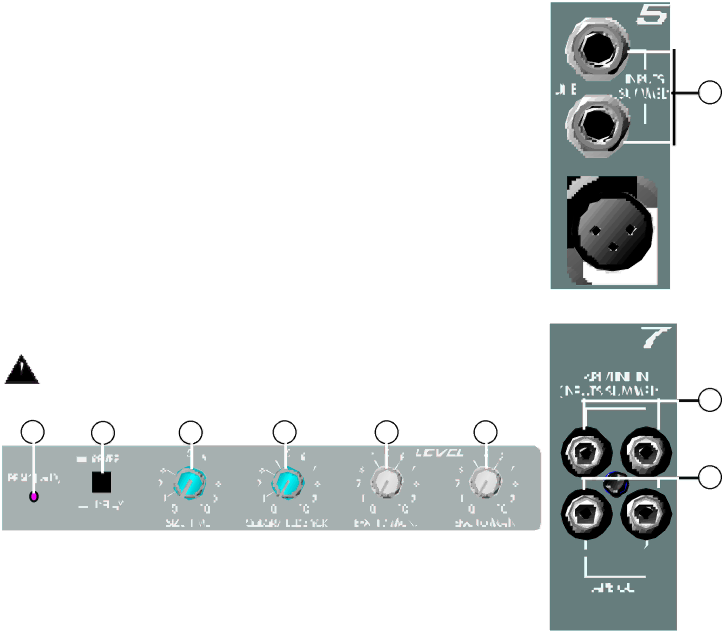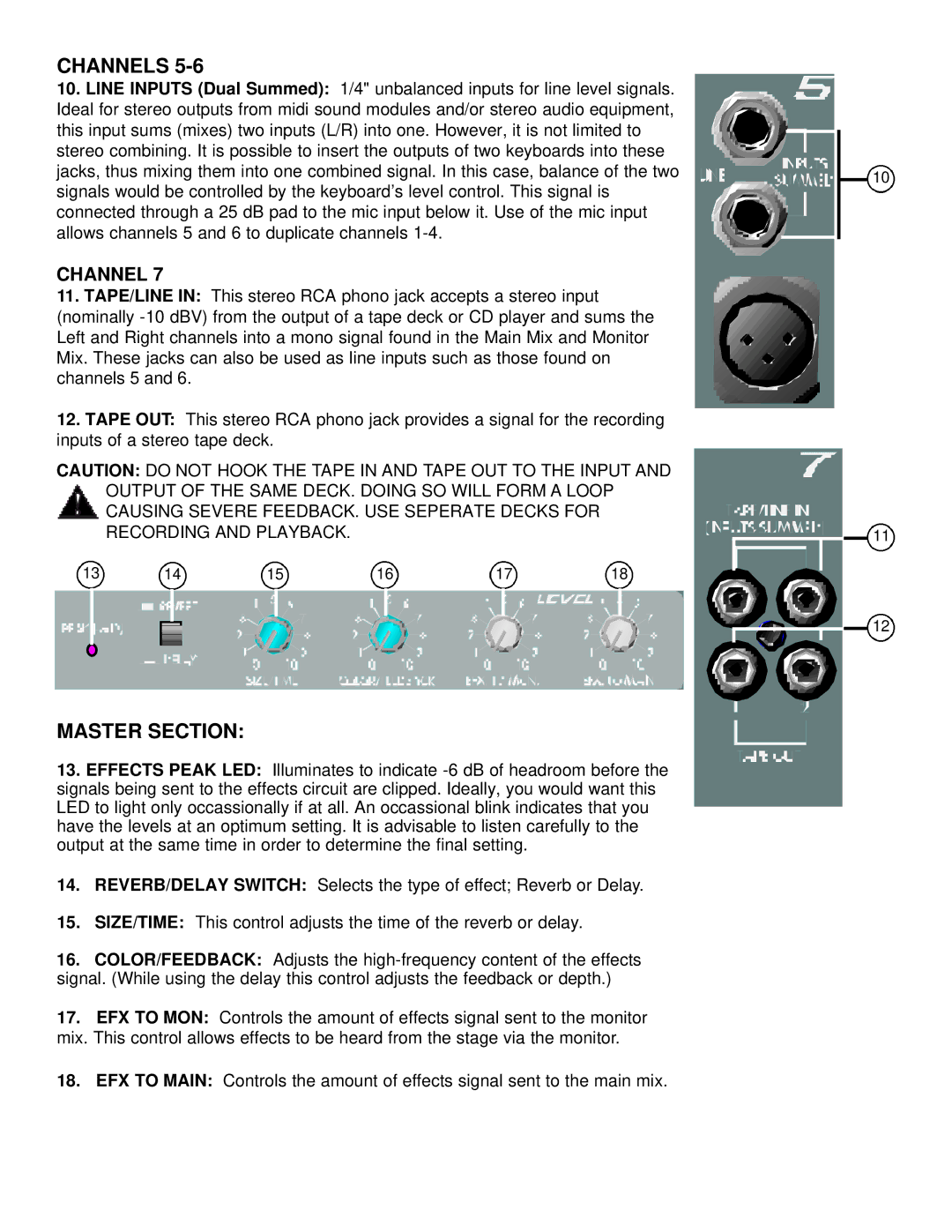
CHANNELS
10.LINE INPUTS (Dual Summed): 1/4" unbalanced inputs for line level signals. Ideal for stereo outputs from midi sound modules and/or stereo audio equipment, this input sums (mixes) two inputs (L/R) into one. However, it is not limited to stereo combining. It is possible to insert the outputs of two keyboards into these jacks, thus mixing them into one combined signal. In this case, balance of the two signals would be controlled by the keyboard’s level control. This signal is connected through a 25 dB pad to the mic input below it. Use of the mic input allows channels 5 and 6 to duplicate channels
CHANNEL 7
11.TAPE/LINE IN: This stereo RCA phono jack accepts a stereo input (nominally
12.TAPE OUT: This stereo RCA phono jack provides a signal for the recording inputs of a stereo tape deck.
CAUTION: DO NOT HOOK THE TAPE IN AND TAPE OUT TO THE INPUT AND OUTPUT OF THE SAME DECK. DOING SO WILL FORM A LOOP ![]() CAUSING SEVERE FEEDBACK. USE SEPERATE DECKS FOR RECORDING AND PLAYBACK.
CAUSING SEVERE FEEDBACK. USE SEPERATE DECKS FOR RECORDING AND PLAYBACK.
13 | 14 |
|
|
| 15 | 16 | 17 | 18 | |
|
|
|
|
|
|
|
|
|
|
|
|
|
|
|
|
|
|
|
|
|
|
|
|
|
|
|
|
|
|
|
|
|
|
|
|
|
|
|
|
|
|
|
|
|
|
|
|
|
|
|
|
|
|
|
|
|
|
|
|
|
|
|
|
|
|
|
|
|
|
MASTER SECTION:
13.EFFECTS PEAK LED: Illuminates to indicate
14.REVERB/DELAY SWITCH: Selects the type of effect; Reverb or Delay.
15.SIZE/TIME: This control adjusts the time of the reverb or delay.
16.COLOR/FEEDBACK: Adjusts the
17.EFX TO MON: Controls the amount of effects signal sent to the monitor mix. This control allows effects to be heard from the stage via the monitor.
10
11
12
18.EFX TO MAIN: Controls the amount of effects signal sent to the main mix.
